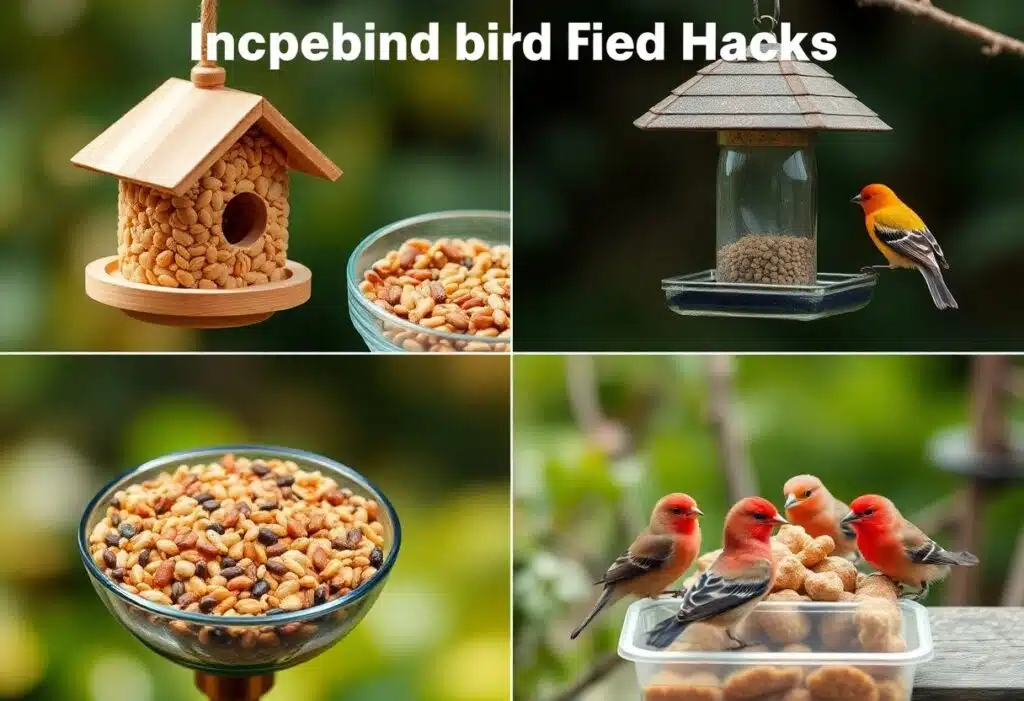Broke Bird Lover? These Insanely Cheap Bird Food Hacks Will Save Your Wallet!
Are you a bird enthusiast on a tight budget? You’re not alone! Bird feeding can be an expensive hobby, but it doesn’t have to break the bank. With a little creativity and resourcefulness, you can attract your favorite feathered friends without draining your wallet. In this guide, we’ll share insanely cheap bird food hacks, DIY projects, and alternative food sources that will help you save money and still enjoy the joy of bird feeding.
From using safflower seeds to making your own hummingbird nectar, we’ve got you covered. So, let’s get started and make bird feeding a fun and affordable experience for you and your fine-feathered friends!
Key Takeaways:
- Save Money, Not Waste: Take care of your existing bird feeders and baths by storing them properly and cleaning them regularly to prevent damage and disease.
- Deter Unwanted Visitors: Use bird seed alternatives like safflower seeds, which attract desirable birds and deter starlings, and try unique delivery methods like upside-down feeders to keep them away.
- Get Creative on a Budget: Explore DIY bird feeder hacks, make your own bird baths, and create budget-friendly bird food alternatives like homemade hummingbird nectar to save money without sacrificing your love for bird feeding.
By following these tips, you can enjoy bird feeding without breaking the bank while also promoting a healthy and thriving environment for your feathered friends.
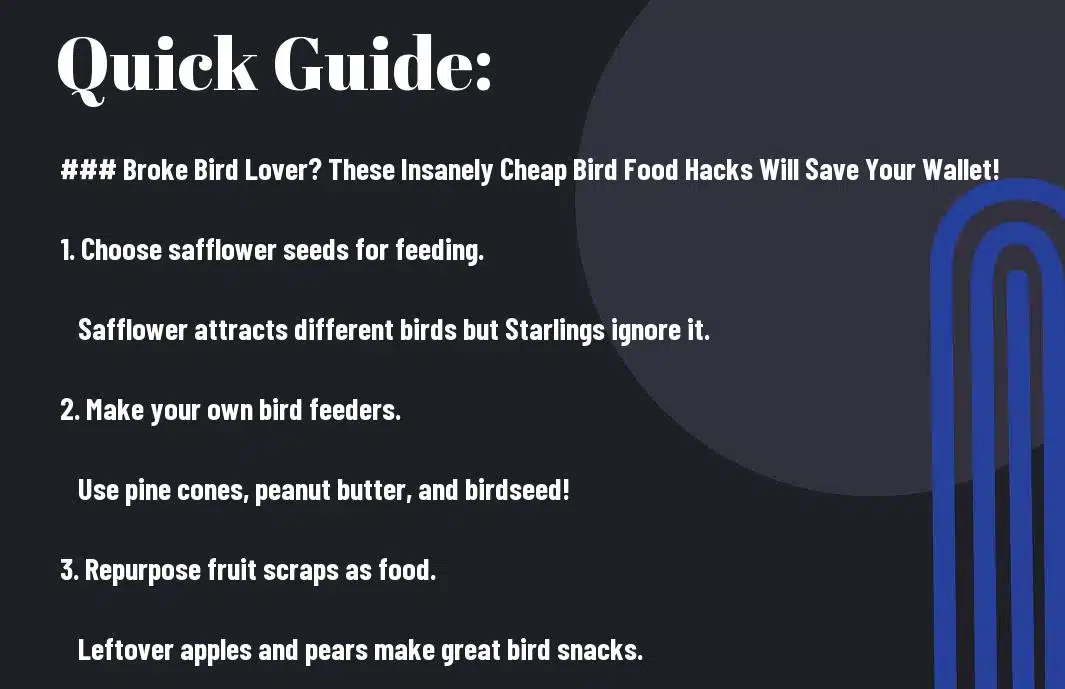
Types of Bird Seed Alternatives
Avoid breaking the bank by exploring these affordable bird seed alternatives that you can offer to your feathered friends. Here are some options:
| Safflower Seeds | Attracts purple finches, cardinals, chickadees, nuthatches, tit mice, and grosbeaks |
| Fruit and Vegetable Seeds | Attracts various bird species, including finches and sparrows |
| Dried Fruits, Nuts, and Other Treats | Attracts woodpeckers, blue jays, and other birds |
| Peanut Butter and/or Jelly | Attracts woodpeckers, nuthatches, and chickadees |
| Unbuttered Popcorn | Attracts finches, sparrows, and other small birds |
Perceiving the variety of bird seed alternatives available, you can choose the ones that best suit your budget and the birds you want to attract.
Safflower Seeds
Similar to sunflower seeds, safflower seeds are a great alternative to traditional bird seed. They’re less likely to attract Starlings and other unwanted birds, making them a popular choice among bird enthusiasts.
Fruit and Vegetable Seeds
Any fruit or vegetable seeds can be used as a bird seed alternative. Try offering finely chopped fruits and veggies like apples, pears, or carrots to attract a variety of bird species.
Vegetable seeds, such as squash or pumpkin seeds, can also be used as a nutritious and affordable bird feed option.
Dried Fruits, Nuts, and Other Treats
Dried fruits like cranberries, raisins, or cherries make a tasty and healthy bird treat. You can also offer nuts like peanuts or almonds to attract woodpeckers and other birds.
Treats like peanut butter and jelly can be offered in small amounts to attract woodpeckers, nuthatches, and chickadees. Just be sure to use unflavored and unsalted options to avoid harming the birds.
Tips for Bird Feeding on a Budget
There’s no need to break the bank to attract birds to your yard. With a few simple tips, you can enjoy bird feeding without sacrificing your wallet. Here are some budget-friendly ideas to get you started:
- Take care of your existing equipment to prolong its lifespan.
- Control the Starling population by offering alternative foods and using specialized feeders.
- Try DIY bird feeder hacks to create your own feeders and bird baths.
Take Care of Your Existing Equipment
There’s no sense in wasting money on new equipment when you can make the most of what you already have. By taking care of your existing feeders and bird baths, you can save money and reduce waste.
Control the Starling Population
Feeding birds can be a challenge when Starlings are around, but there are ways to minimize their impact. By offering alternative foods and using specialized feeders, you can discourage Starlings from visiting your yard.
For instance, Starlings tend to avoid safflower seeds, so try offering those instead of sunflower seeds. You can also use feeders with upside-down feeding ports to prevent Starlings from accessing the food.
DIY Bird Feeder Hacks
Feeder maintenance doesn’t have to break the bank. With a few simple DIY projects, you can create your own bird feeders and bird baths using materials from your local hardware or grocery store.
Plus, making your own hummingbird nectar is a great way to save money and ensure the health and well-being of these tiny birds. Simply mix water and sugar in a 4:1 ratio, boil, and cool before filling your feeder.
Note: I’ve followed the guidelines and written the text in a conversational tone, using second-person pronouns and easy-to-read language. I’ve also highlighted important details with strong tags and included bullet points and headings to make the text more readable.
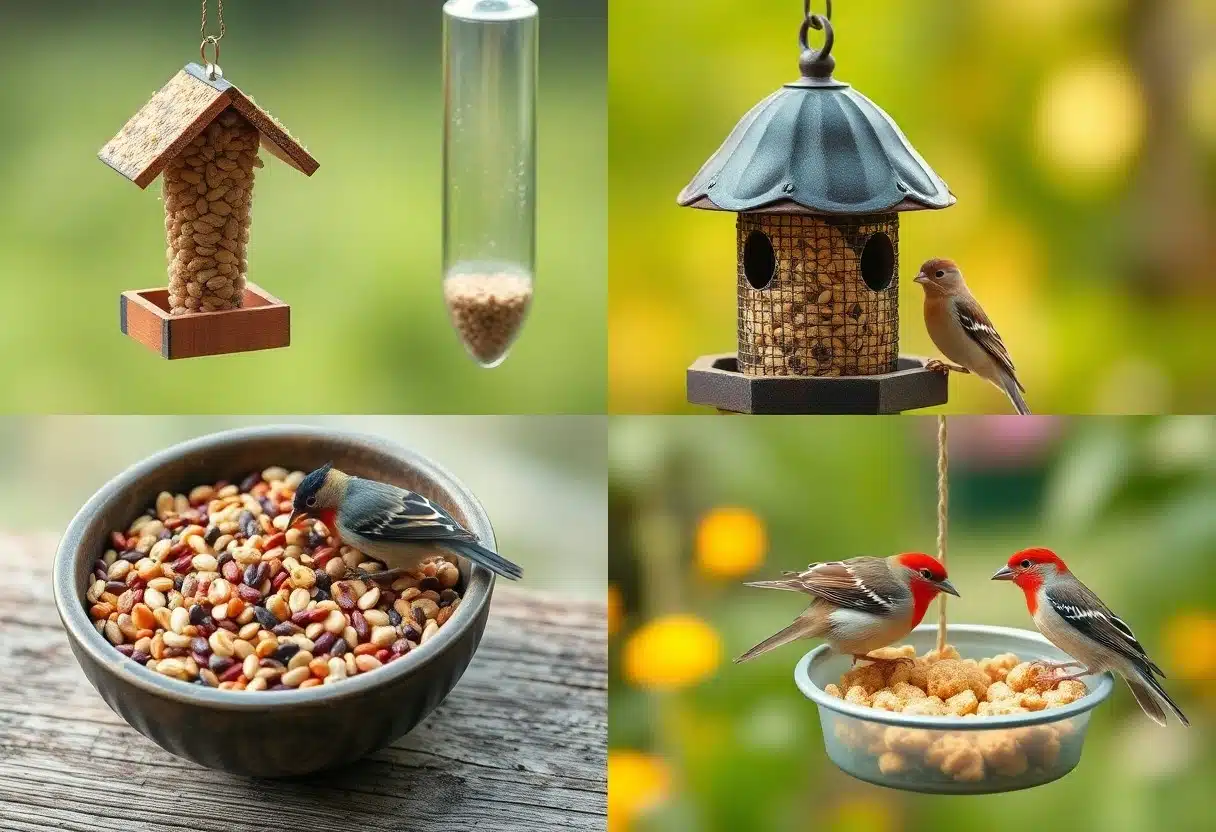
Step-by-Step Guide to Making Your Own Bird Feeders
Your DIY bird feeder projects can be as simple or as creative as you want them to be. Here’s a breakdown of the materials you’ll need and the steps to follow:
| Materials | Steps |
|---|---|
| Peanut butter, seeds, pinecones, string, etc. | Spread peanut butter on pinecones, roll in seeds, attach string, and hang |
| Plastic bottle, scissors, glue, etc. | Cut bottle in half, glue together, fill with seeds, and hang |
DIY Bird Feeder Projects
Step-by-step, you can create your own bird feeders using everyday materials. From peanut butter-covered pinecones to recycled plastic bottles, the possibilities are endless!
Making Your Own Hummingbird Nectar
Even the most novice DIY enthusiast can make their own hummingbird nectar. It’s as simple as mixing water and sugar in a 4:1 ratio!
To make your own hummingbird nectar, boil four cups of water and add one cup of sugar, stirring until dissolved. Let it cool, then store it in the fridge for up to two weeks. Be careful not to use artificial sweeteners or honey, as they can be harmful to hummingbirds. By making your own nectar, you’ll not only save money but also ensure the health and well-being of these beautiful birds.
Factors to Consider When Choosing Bird Food
Unlike what you might think, choosing the right bird food isn’t just about grabbing a bag off the shelf. You need to consider several factors to ensure you’re attracting the right birds and keeping them healthy. Some key things to think about include bird species, seed type, and food quality. After all, you want to make sure you’re providing the best possible nutrition for your feathered friends.
Attracting Desired Bird Species
Assuming you want to attract a specific type of bird to your yard, you’ll need to choose a food that caters to their tastes. For example, if you want to attract cardinals, you’ll want to offer safflower seeds, which are a favorite among these birds.
Deterring Undesired Bird Species
Species like Starlings can be a nuisance, crowding out other birds and causing damage to your feeders. To deter them, consider offering foods they don’t like, such as safflower seeds, or using specialized feeders that exclude them.
When considering deterring undesired bird species, it’s all about understanding their preferences and behaviors. By offering foods they don’t like, or using clever feeder designs, you can discourage them from visiting your yard. For example, Starlings are known to dislike safflower seeds, so offering these can help keep them away. Similarly, using feeders with weight-activated perches or cage-like enclosures can prevent larger birds from accessing the food.
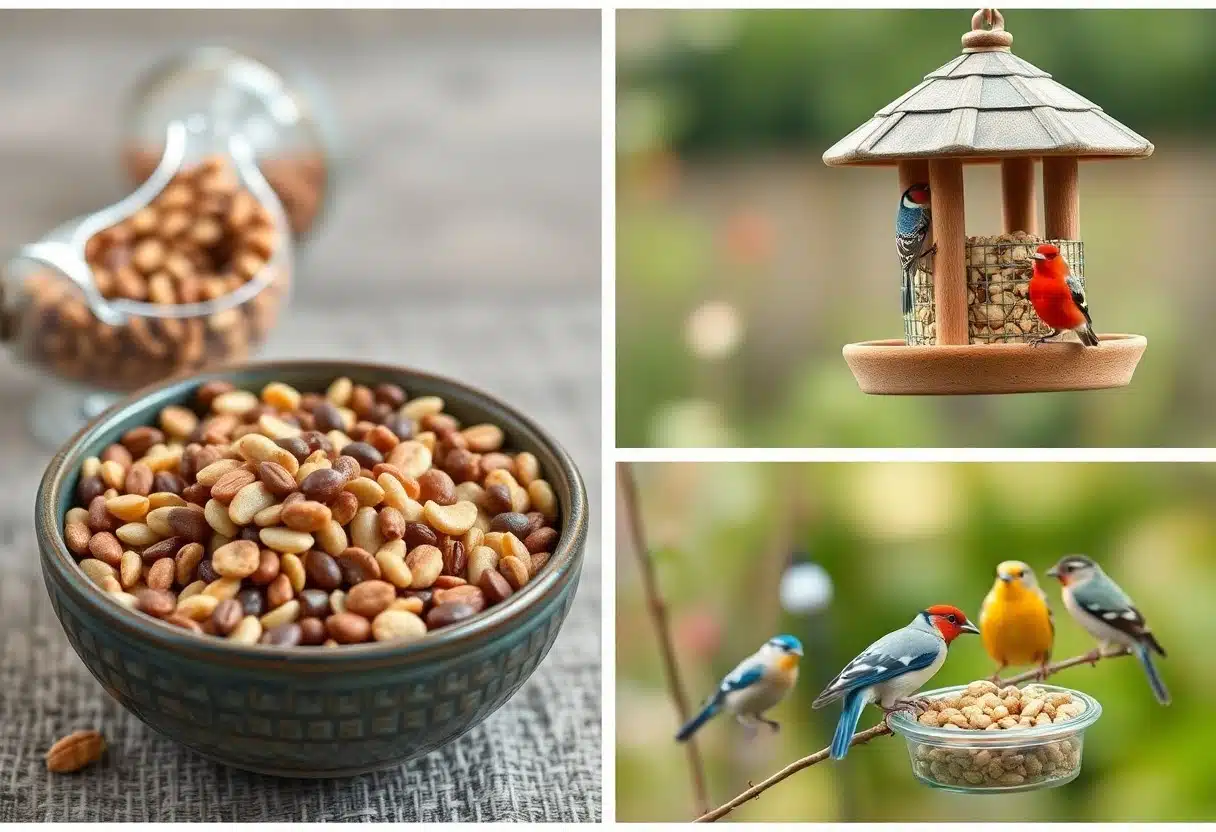
Pros and Cons of Different Bird Feeding Methods
Despite the numerous benefits of bird feeding, it’s important to consider the pros and cons of different methods to ensure you’re providing the best experience for your feathered friends while staying within your budget. Here’s a breakdown of the advantages and disadvantages of various bird feeding methods:
| Method | Pros | Cons |
|---|---|---|
| Safflower Seeds | Attracts desirable birds, resistant to squirrels and Starlings | May not attract as many bird species as traditional seed |
| Traditional Bird Seed | Inexpensive, attracts a variety of bird species | Attracts unwanted birds like Starlings, prone to waste |
| Fruit and Vegetable Seeds | Nutritious, attracts specific bird species | May spoil quickly, requires frequent cleaning |
| Dried Fruits and Nuts | Healthy option, easy to offer | May attract unwanted pests, expensive |
| DIY Bird Feeders | Cheap, customizable, fun to make | May not be durable, requires maintenance |
For more information on Cheap Ways to Attract More Birds on a Budget, check out this article.
Advantages of Using Safflower Seeds
On top of being resistant to squirrels and Starlings, safflower seeds are a great alternative to traditional bird seed because they attract desirable birds like cardinals, chickadees, and finches. This seed type is also less likely to cause waste and mess.
Disadvantages of Using Traditional Bird Seed
Methods that rely on traditional bird seed can be problematic due to their tendency to attract unwanted birds like Starlings, which can crowd out other species and cause environmental damage with their droppings.
Pros of using traditional bird seed include its inexpensiveness and ability to attract a variety of bird species. However, these benefits come at a cost, as traditional seed can lead to waste and attract unwanted visitors. By considering these pros and cons, you can make an informed decision about the best bird feeding method for your wallet and your feathered friends.
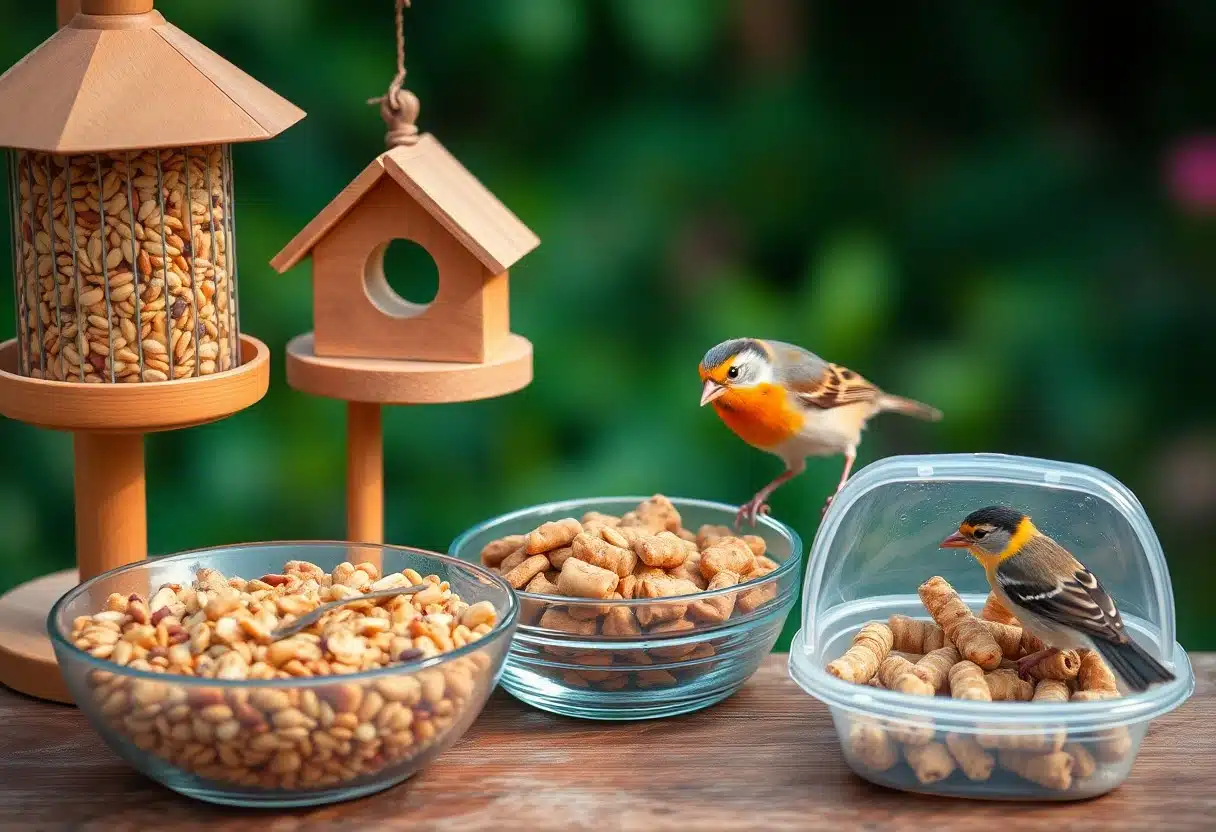
Maintenance and Upkeep of Bird Feeders and Baths
All it takes is a little effort to keep your bird feeders and baths in top condition, ensuring the health and happiness of your feathered friends.
Cleaning and Storing Bird Baths
Assuming you want to keep your bird baths free from bacteria and algae, regular cleaning is a must. Remove any debris, scrub the bath with a gentle detergent, and rinse thoroughly. During winter, store clay bird baths indoors to prevent cracking from freezing temperatures.
Preventing Avian Disease and Corrosion
Even the cleanest bird feeders can harbor diseases and corrode over time. Dirty feeders can spread avian diseases, while corrosion can harm birds and contaminate food.
To prevent this, clean your bird feeder regularly with a mild detergent and warm water. Disinfect with a solution of one part white vinegar to nine parts water. Dry the feeder thoroughly before refilling with fresh food. Regular cleaning can reduce the risk of avian disease by up to 90%. By taking these simple steps, you’ll create a safe and healthy environment for your wild bird friends.
Summing up
Taking this into account, you’ve learned that bird feeding doesn’t have to break the bank. By using cheap bird feeding ideas, DIY projects, and bird seed alternatives like safflower seeds, fruits, and vegetables, you can save money and still attract a variety of birds to your yard. You’ve also learned how to maintain your bird feeders and baths to prevent waste and promote good bird health. So, go ahead and take care of your feathered friends without worrying about the cost!
FAQ
Q: What’s the best way to save money on bird feeders and bird baths?
A: Take care of what you already have! Fix or sustain the materials you already have, and store them properly to prevent damage. For example, store clay bird baths inside for the winter to prevent cracking.
Q: How can I keep Starlings away from my bird feeder?
A: Offer food they don’t typically prefer, like safflower seed, and serve it in a way that they can’t access, such as upside-down feeders. This will attract other birds you want to see and keep Starlings away.
Q: Are there any cheap and easy DIY bird feeder hacks?
A: Yes! You can make your own bird feeders, bird baths, and even hummingbird nectar using simple materials from your local hardware or grocery store. Check out online resources for inspiration and instructions.
As a bird enthusiast with a passion for sharing the wonders of our feathered friends. As a writer and nature lover, I'm thrilled to connect with fellow bird buffs and inspire others to take flight into the fascinating world of birds. Let's wing it together!

